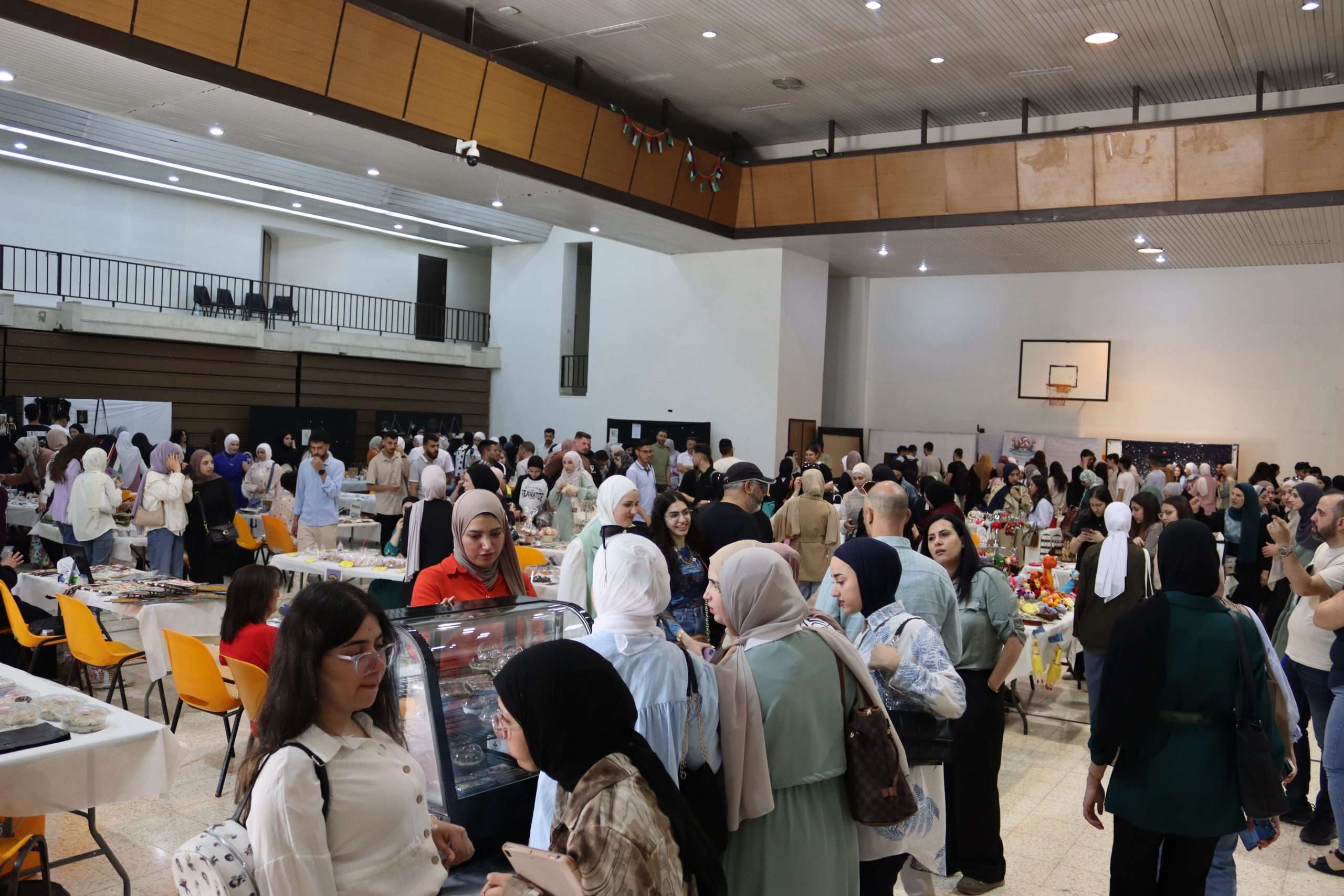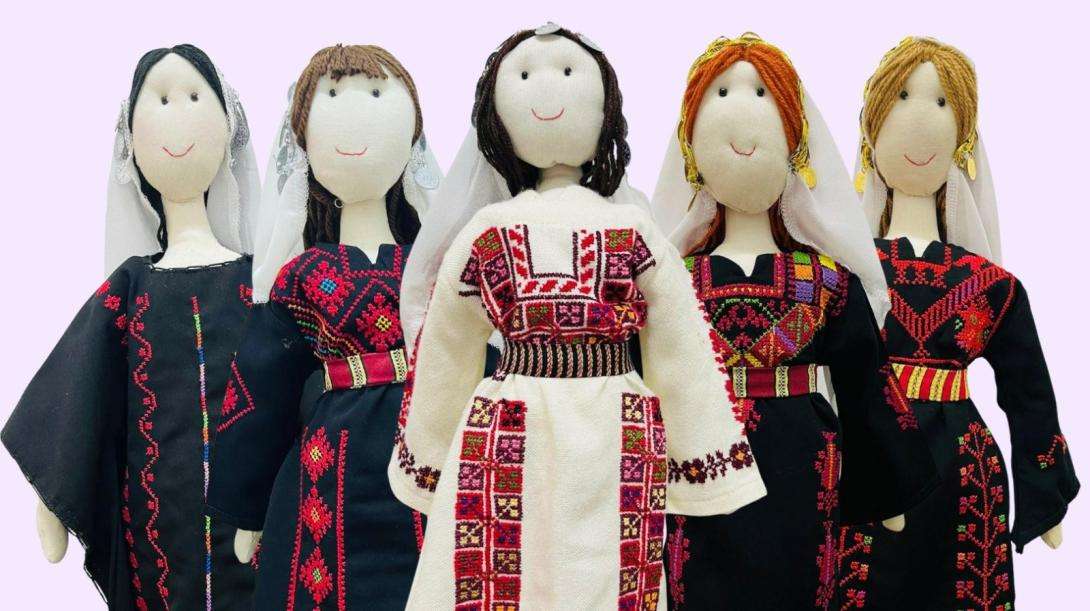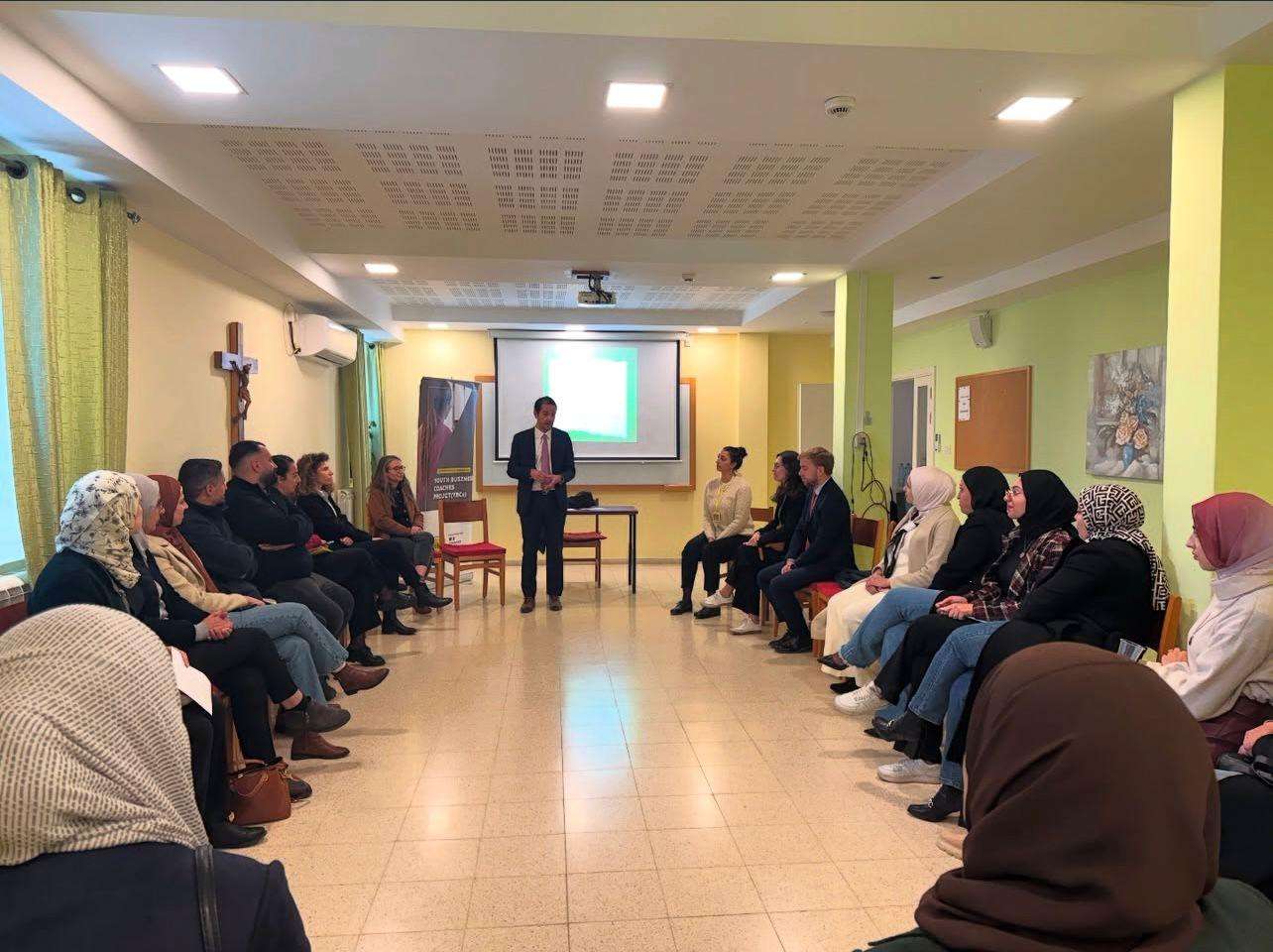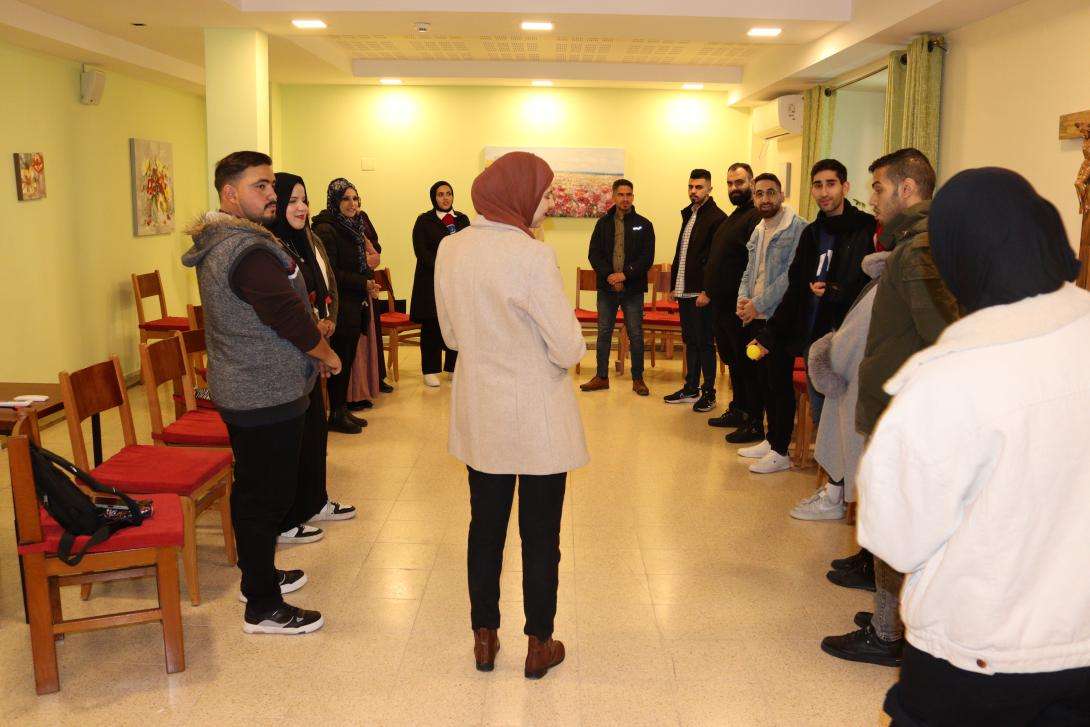
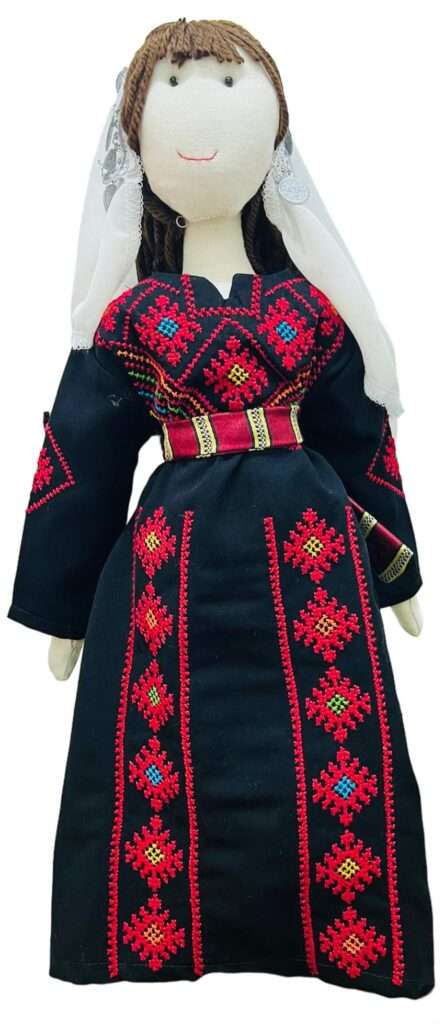
Bethlehem Awaits You Every Year!
As soon as we set foot in Bethlehem, I could tell this place was more than a simple destination; it was a living, breathing chapter of history. Walking through its vibrant streets, crowded with tourists and lined with ancient walls, the city’s soul merged with ours. These walls seemed to whisper stories of Christ’s birth. George, my travel partner, shared my excitement and curiosity about this historic city, his eyes shining with wonder.
We were drawn to charming little shops displaying beautiful olive wood carvings and colourful, embroidered fabrics. Wandering through Bethlehem, it felt like the city was alive with history. Near Manger Square, the delicious smell of falafel led us to a nearby restaurant. A local passerby told us that this was the famous Yaffawi Afteem Restaurant, founded by a family who were displaced from Jaffa to Bethlehem in 1948. Learning about its rich history made us eager to have our breakfast there.
After a satisfying meal, we made our way to the Church of the Nativity. Its grand halls and impressive stairs seemed to reach up to the sky. Inside, we found the place where Jesus was born, marked by a silver star on the floor. We heard a tour guide telling a group of tourist about Bethlehem’s ancient history, dating back to 2000 BC, and how the old town and the church became a World Heritage Site in 2014. This piece of information made us appreciate the city even more.
Outside the church, we met an elderly woman with a warm smile and eyes that encapsulated the city’s history. “I am Georgette, eighty-five years old,” she said, her voice pulsating with years of memories. She pointed across from the church to the Omar Bin Al-Khattab Mosque, close to the Church of the Nativity, illustrating how history can intertwine religions in an eternal dance of peace. “In Bethlehem, life is shared between Muslims and Christians; we live side by side,” she said proudly. She added, “This interfaith coexistence has been a tradition since the visit of Caliph Omar Bin Al-Khattab to the city in 648 AD, who ensured that Muslims would pray in the Church of the Nativity one at a time, without gathering for collective prayer, calling to prayer, making any changes, and since then, mosques have been built near churches to honour and uphold this promise.
Georgette recommended we visit other beautiful places like the Monastery of the Lady’s Well in Beit Sahour, Mar Saba Monastery, Beit Jala Orthodox Church, St. Nicholas Church, the Monastery of the Closed Paradise, and Solomon’s Pools in the nearby village of Artas. She also suggested camping in Bethlehem’s wilderness and enjoying the moonlit nights.
However, what intrigued us most was the neighbourhood of the Seven Widows in the village of Battir. The story of this neighbourhood, narrating the tale of seven widows from the village who, despite being widowed at a young age, succeeded in cultivating the land to support their families, was captivating. This neighbourhood, with its simple old houses huddled together, overlooks the vegetable and fruit basket of Battir and the Ottoman Jerusalem-Jaffa railway.
We headed to Battir,where we wandered through the neighbourhood of the Seven Widows, contemplating their stories almost etched on the walls of the ancient houses, feeling the resilient spirit of these women. Every corner of this neighbourhood spoke of the cooperative work and solidarity that prevailed among these seven courageous widows who faced life’s challenges with bravery and determination.
Renewed with enthusiasm, George and I decided to explore every corner of this city rich in history and spirituality. We bid farewell to Georgette with grateful hearts for this memorable encounter, which will remain etched in our memories. As we soaked in the essence of history, we felt that Bethlehem awaits us every year.
Did you know that the city of Bethlehem is one of the areas through which the Palestine Heritage Trail passes? Here, you can wander, enjoy the beauty and diversity of Palestine’s nature, and learn about its history and heritage. For more information about the Palestine Heritage Trail, you can visit the website at https://phtrail.org/.
Desde el momento en que pusimos un pie en Belén, supe que este lugar era más que un simple destino; era un capítulo vivo y respirante de la historia. Al recorrer sus bulliciosas calles, repletas de turistas y bordeadas por antiguas murallas, sentí cómo el alma de la ciudad se fusionaba con la nuestra. Esas murallas parecían susurrar historias del nacimiento de Cristo. George, mi compañero de viaje, compartía mi emoción y curiosidad por esta ciudad histórica; sus ojos brillaban de asombro.
Nos vimos atraídos por las encantadoras tiendas que exhibían hermosas tallas de madera de olivo y coloridos tejidos bordados. Al pasear por Belén, sentíamos que la ciudad estaba impregnada de historia. Cerca de la Plaza del Pesebre, el delicioso aroma del falafel nos condujo a un restaurante cercano. Un lugareño nos contó que se trataba del famoso restaurante Yaffawi Afteem, fundado por una familia desplazada de Jaffa a Belén en 1948. Conocer su rica historia aumentó aún más nuestro deseo de desayunar allí.
Tras una comida satisfactoria, nos dirigimos a la Iglesia de la Natividad. Sus grandiosos salones e impresionantes escaleras parecían tocar el cielo. En su interior, encontramos el lugar donde Jesús nació, marcado por una estrella de plata en el suelo. Escuchamos a un guía turístico contar a un grupo de visitantes sobre la antigua historia de Belén, que se remonta al año 2000 a.C., y cómo el casco antiguo y la iglesia se convirtieron en Patrimonio de la Humanidad en 2014. Esta información nos hizo apreciar aún más la ciudad.
Al salir de la iglesia, conocimos a una anciana mujer con una cálida sonrisa y unos ojos que parecían contener la historia de la ciudad. “Soy Georgette, tengo ochenta y cinco años”, dijo, su voz resonando con años de recuerdos. Señaló hacia la mezquita de Omar Bin Al-Khattab, cerca de la Iglesia de la Natividad, ilustrando cómo la historia puede entrelazar religiones en una danza eterna de paz. “En Belén, musulmanes y cristianos conviven en armonía; vivimos lado a lado”, dijo con orgullo. Agregó: “Esta coexistencia interreligiosa es una tradición desde la visita del Califa Omar Bin Al-Khattab a la ciudad en el año 648 d.C., quien aseguró que los musulmanes rezaran en la Iglesia de la Natividad uno por uno, sin reunirse para la oración colectiva, ni hacer llamados a la oración, ni realizar cambios. Desde entonces, se han construido mezquitas cerca de iglesias para honrar y mantener esta promesa”.
Georgette nos recomendó visitar otros lugares hermosos como el Monasterio del Pozo de la Dama en Beit Sahour, el Monasterio de Mar Saba, la Iglesia Ortodoxa de Beit Jala, la Iglesia de San Nicolás, el Monasterio del Paraíso Cerrado y las Piscinas de Salomón en el cercano pueblo de Artas. También sugirió acampar en la naturaleza salvaje de Belén y disfrutar de las noches iluminadas por la luna. Sin embargo, lo que más nos intrigaba era el barrio de las Siete Viudas en el pueblo de Battir. La historia de este barrio, que narra la vida de siete viudas del pueblo que, a pesar de quedar viudas a una edad temprana, lograron cultivar la tierra para mantener a sus familias, era cautivadora. Este barrio, con sus sencillas casas antiguas apiñadas, domina la cesta de verduras y frutas de Battir y el ferrocarril otomano Jerusalén-Jaffa.
Nos dirigimos a Battir, donde deambulamos por el barrio de las Siete Viudas, contemplando sus historias casi grabadas en las paredes de las antiguas casas, sintiendo el espíritu resiliente de estas mujeres. Cada rincón de este barrio hablaba del trabajo cooperativo y la solidaridad que prevalecían entre estas siete valientes viudas que enfrentaban los desafíos de la vida con valentía y determinación.
Renovados con entusiasmo, George y yo decidimos explorar cada rincón de esta ciudad rica en historia y espiritualidad. Nos despedimos de Georgette con corazones agradecidos por este encuentro memorable, que quedará grabado en nuestros recuerdos. Mientras absorbíamos la esencia de la historia, sentíamos que Belén nos espera cada año.
¿Sabías que la ciudad de Belén es una de las áreas por las que pasa el Sendero del Patrimonio de Palestina? Aquí, puedes deambular, disfrutar de la belleza y diversidad de la naturaleza de Palestina, y aprender sobre su historia y patrimonio. Para obtener más información sobre el Sendero del Patrimonio de Palestina, puedes visitar el sitio web en https://phtrail.org/.
References
Books:
- Mustafa, Walid. The Story of the City of Bethlehem. 1st ed. Arab Organization for Education, Culture, and Science, Department of Culture at the Palestine Liberation Organization: Tunis. 1986.
Studies and Research:
- Barghouti, Anas. Jadallah, Murad. The Refugee Children in Conflict with the Law in Bethlehem Governorate. Al-Shorouq Institution: Bethlehem. 2015.
Online Newspapers:
- Bethlehem. Palestinian News & Info Agency. Retrieved from Bethlehem | Palestinian National Information Center (wafa.ps)


